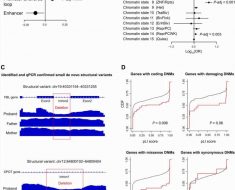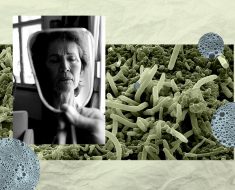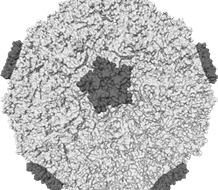Heart failure (HF) guidelines and practice have been quick to embrace the sodium-glucose cotransporter 2 (SGLT2) inhibitor drug class after DAPA-HF, EMPEROR-Reduced, and other trials suggested that, apparently as a class, they cut cardiovascular (CV) risk in patients with heart failure and reduced ejection fraction (HFrEF) both with and without diabetes. But how they achieve that is poorly understood, and such high-risk patients do not all seem to benefit to the same extent.
Now, a new analysis based on the CANVAS trial suggests that such patients most likely to respond to SGLT2-inhibitor therapy can potentially be identified by their profiles on a diverse assay panel targeting circulating biomarkers of myocardial injury and remodeling.
The more biomarkers that were elevated, the poorer the patients’ outcomes in a post-hoc feasibility study based on the trial, which tested canagliflozin (Invokana, Janssen Pharmaceuticals) in patients with poorly controlled type 2 diabetes and a history of CV events or multiple other risk factors.
But also, the SGLT2 inhibitor’s clinical benefit went up significantly with the number of elevated markers in the panel of three, each reflecting different mechanisms underlying the drug’s effects. Patients with a rise in all three showed a 56% reduction in risk for major adverse cardiac events (MACE). Those with no biomarker elevations or only one showed no clinical benefit from canagliflozin.
The findings suggest that the biomarker responses can predict outcomes “even in this high clinical-risk population,” Muthiah Vaduganathan, MD, MPH, Brigham and Women’s Hospital and Harvard Medical School, Boston, Massachusetts, told theheart.org | Medscape Cardiology. Those with no assay abnormalities “face markedly lower risk compared with people who have multiple abnormalities in these biomarkers.”
The SGLT2 inhibitors haven’t generally been seen to lower the risk of myocardial infarction (MI), stroke, or CV death, he noted. But the biomarkers seem to predict which high CV-risk patients will show fewer of those events, and “identify those who may stand to benefit the most” from the drug class.
Vaduganathan presented the analysis this week at HFA 2021, the annual meeting of the Heart Failure Association of the European Society of Cardiology (ESC-HFA), conducted both virtually and live in Florence, Italy.
The study is an early look into the feasibility of the biomarker-panel approach to guiding SGLT2 inhibitor therapy, “but if this were to hold up,” said Mark H. Drazner, MD, perhaps one could “identify those who are at higher risk and just tailor your therapy, thereby sparing the people who potentially would not benefit the extra cost and potential risk.”
It remains unclear how SGLT2 inhibitors benefit patients, Drazner, of the University of Texas Southwestern Medical Center, Dallas, told theheart.org | Medscape Cardiology. “Could these types of biomarker studies provide some insights into potential mechanisms? That’s a potential offshoot of this kind of work, maybe a greater understanding of the mechanism of these medications.”
Further risk stratification tools are largely unneeded for most patients with recognized coronary heart disease or kidney disease or with HF, Vaduganathan said. “We know that such individuals are high risk and should be appropriately treated with risk-reducing strategies such as an SGLT2 inhibitor.”
But for lower-risk patients, such as those with type 2 diabetes, “it’s harder to make that clinical decision,” he said. “It’s actually harder to not only convince the patient, but also convince yourself that the individual is going to benefit from a given therapy. And so, the use of these biomarkers can help inform that decision.”
On the other hand, Drazner cautioned, the SGLT2 inhibitors may improve outcomes in ways that are not yet recognized and aren’t picked up by a panel of selected biomarkers. “You want to make sure that the group to whom you’re not giving the medication doesn’t miss out on other potential benefits,” he said. “That’s an area that needs further exploration.”
The selection of individual components of the assay panel, Vaduganathan agreed, “is still open for debate. I think the next step is to understand what is the optimal combination of biomarkers.”
The CANVAS trial, conducted in 30 countries, randomly assigned 4330 patients with diabetes for at least 10 years with a history of CV disease or other CV risk factors, such as elevated systolic blood pressure or lipids, to receive canagliflozin at either 300 mg/day or 100 mg/day or placebo.
The biomarker panel, comprising assays for cardiac troponin T by high-sensitivity assay (hs-cTnT), soluble suppression of tumorigenesis-2 (sST2), and insulin-like growth factor–binding protein 7 (IGFBP7) was created based on 3040 CANVAS participants, Vaduganathan reported. Patients were assigned one point for every elevated biomarker. Elevations were defined as:
-
≥ 14 pg/mL for hs-cTnT
-
> 35 ng/mL for sST2
-
> 96.5 ng/mL for IGFBP7
“We’ve selected three biomarkers that each evaluate the different events that SGLT2 inhibitors actually prevent, and are hoping that when combined into a single panel, we can evaluate varied effects across these systems,” Vaduganathan said. Levels of hs-cTnT reflect myocardial injury; sST2 is a marker of vascular congestion and myocardial fibrosis; and IGFBP7 elevations point to acute kidney injury.
“They’re all quite prognostic of these events when evaluated alone, and in fact, they have additive value when we combine them.” Of the three biomarkers, hs-cTnT provides the strongest indication and seems to drive the panel’s interaction with SGLT2 inhibitor therapy, Vaduganathan said. “But the signal is certainly stronger when we evaluate multiple markers in combination.”
The risks of different CV and renal endpoints each climbed significantly with increasing number of biomarker elevations. The four assessed events were MACE (CV death, nonfatal MI, nonfatal stroke, or HF); hospitalization for HF; CV death; and a renal composite endpoint that included a sustained 40% decrease in eGFR, need for dialysis or kidney transplantation, or death from renal causes.
Table 1. Hazard Ratio (HR)* for MACE on Canagliflozin by Number of Biomarker Panel Elevations in CANVAS
| Number of Biomarker Elevations (% of cohort) | HR (95% CI) |
|---|---|
| 0 of 3 (36) | 0.94 (0.63 – 1.39) |
| 1 of 3 (35) | 1.36 (0.96 – 1.92) |
| 2 of 3 (27) | 0.62 (0.46 – 0.83) |
| 3 of 3 (2) | 0.44 (0.19 – 1.01) |
As the number of elevated biomarkers on the panel went up, from none to three, the risk of MACE for patients on canagliflozin vs placebo steadily declined (Table 1).
Whereas an assay panel may well be successful in guiding SGLT2 inhibitor therapy, Vaduganathan said, “the costs and cost-effectiveness of broad implementation of this biomarker-based allocation strategy will need to be formally evaluated.”
CANVAS and the current analysis were funded by Janssen Research & Development. Vaduganathan has disclosed relationships with Amgen, American Regent, AstraZeneca, Baxter Healthcare, Bayer AG, Boehringer Ingelheim, Cytokinetics, Lexicon Pharmaceuticals, Novartis, Relypsa, and Roche Diagnostics. Drazner has reported no relevant financial relationships.
Heart Failure Association of the European Society of Cardiology, 2021. Presented June 29 at the session: Risk Factors and Prevention, Rehabilitation and Sports Cardiology, Cardiovascular Disease in Special Populations.
Follow Steve Stiles on Twitter: @SteveStiles2. For more from theheart.org | Medscape Cardiology, follow us on Twitter and Facebook.
For more from theheart.org | Medscape Cardiology, follow us on Twitter and Facebook.
Source: Read Full Article





